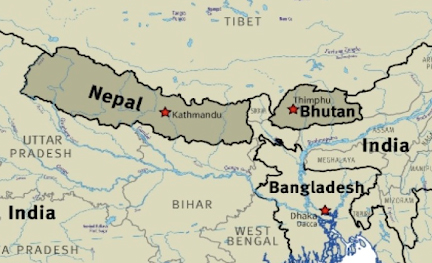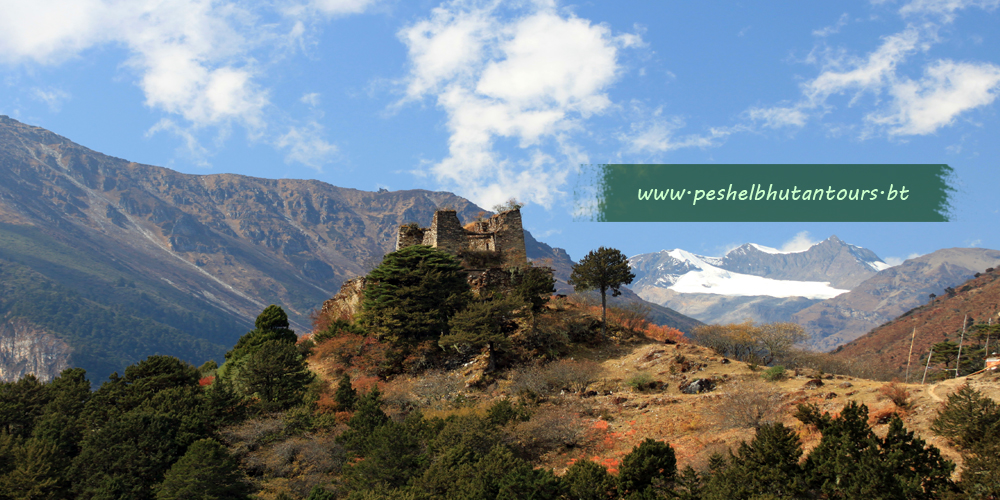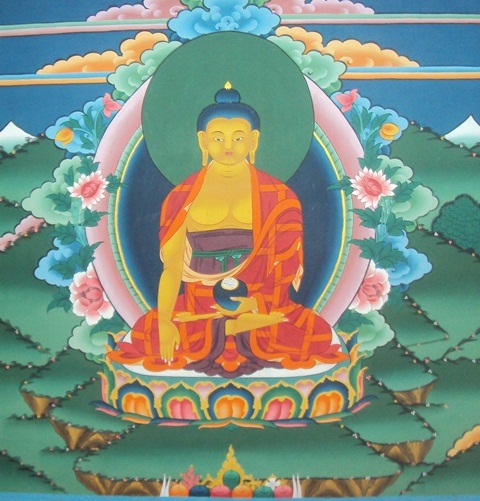
ABOUT BHUTAN - THE LAND OF THUNDER DRAGON
Hidden away high among the mighty Himalayan range, the hidden kingdom of Bhutan is a Destiny that even the most seasoned traveler considers a privilege to visit. Sacred monasteries sit precariously on sheer cliffs, fluttering prayer flags line high mountain ridges, red robed monks chant in distant temples, and colourful masked dancers perform ancient rituals on sacred Dzong (fortress) grounds during Buddhist festivals. The people of Bhutan have drawn a rich culture from this heritage and made it the essence of their timeless identity.
It only opened its doors to tourism in 1974, with the number for tourists visiting Bhutan kept to an environmentally manageable level through government regulated tourist tariff. A totally Buddhist kingdom, Bhutanese are renowned for their happiness, and are a proud people who wear their national costume with pride. Travel to Bhutan with Pe-Shel Bhutan Tours and we will expose you to the awe-inspiring mysteries that this land has to offer.
From the landscapes of snow-clad mountains, lush valleys, dense forests and rushing streams, to hidden rituals in remote monasteries and the daily life in far flung rural communities. Pe-Shel Bhutan Tours will open the door to your Himalayan dream.
Even though Bhutan is a year-round Destination, the most popular times to visit are during spring (Mar-May) and autumn (Sep-Nov). The weather is milder and many of the large festivals take place during these seasons. Spring can be cloudier and have more rain than autumn, but the wildlife and flowers are at their most vivid. Winter (Dec-Feb) can be very cold, however the skies are usually clear providing good photographic opportunities, and there are also fewer tourists around. The summer monsoon season (mid Jun-Aug) is not highly recommended for travel to Bhutan with high temperatures and a good chance of rainfall.
Bhutan's past is not only a fascinating story it continues to be a remarkable journey. Through the wisdom of her five monarchs, the kingdom's progress has certainly been challenging, but ultimately finely judged and intelligently handled. Bhutan is known as Druk Yul - or Land of the Thunder Dragon - and is the only Mahayana Buddhist kingdom in the world today. It lies in the heart of eastern Himalayas, bordered by China to the north and northwest, and by the India to the south and east. This means that Bhutan lies between two of the world's giant powers, which might be viewed by some as being somewhat precarious. Covering an area of 46,500 sq. km, Bhutan is about the size of Switzerland and about a quarter of the price. For centuries, the awesome Himalayan barrier protected Bhutan from its powerful, northern neighbour, leaving it basically untouched and thereby allowing this magical kingdom to evolve in its own individual way. It has certainly done that.
Bhutan's early history is steeped in mythology. It may have been inhabited as early as 2000 B.C., but not much was known until the introduction of Tibetan Buddhism in the 9th Century when turmoil in Tibet forced many monks to flee to Bhutan. Buddhism was probably introduced in the 2nd Century, although traditionally its introduction is credited with the visit of Guru Rinpoche in AD 747 who arrived in Bhutan from Tibet on the back of a tigress - an impressive entrance - and who continues to be regarded as one of the most important figures in Bhutan’s history. Indeed, Guru Rinpoche is considered to be the Second Buddha. In a certain way Bhutan's history brims over with ghosts, spirits, yetis, and reincarnated lamas and all are accepted as part of daily life.
In the 12th Century, the Drukpa Kagyupa School of Mahayana Buddhism was established and remains the dominant form of Buddhism in Bhutan today. The country's political history is intimately tied to its religious history and the relations among the various monastic schools and monasteries.
Not all was peace and harmony. Before the 16th century, numerous clans and noble families ruled in the different valleys throughout Bhutan, quarreling both among themselves and with Tibet. This changed in 1616 with the arrival of Ngawang Namgyal, a monk of the Drukpa Kagyu school of Buddhism from Tibet. Having first taught throughout the region, Namgyal soon established himself as Bhutan's religious head with the title Zhabdrung Rinpoche. He was a busy man, with little time to relax repelling repeated attacks from rival lamas and Tibetan forces and yet the political system he established lasted until the beginning of the 20th century. However, with Zhabdrung’s death in 1705 came 200 years of internal conflict and political infighting. Valleys were their own kingdoms. There was much wrangling for power and monastic leadership, which resulted in mini civil wars, unsavory assassinations, much shouting, and serious swordplay.
In the early 18th Century, Bhutan had successfully developed control over the principality of Cooch Behar, which lay south of the Bhutanese border in India. By the mid-1760s, Thimphu considered Cooch Behar its dependency, stationing a garrison force there and directing its civil administration. In a succession dispute in Cooch Behar two years later, however, the nominee put forward by Bhutan for the throne was opposed by a rival who invited British troops, and, in effect, Cooch Behar became a dependency of the British East India Company. For the Bhutanese, this meant trouble.
In 1784, the British turned over to Bhutanese the control of Bengal Duars territory, where boundaries were poorly defined. As in its other foreign territories, Bhutan left administration of the Bengal Duars territory to local officials and collected its revenues. Although major trade and political relations failed to develop between Bhutan and Britain, the British had replaced the Tibetans as the major external threat. Boundary disputes plagued Bhutanese-British relations, and despite various diplomatic missions, there was no reconcilliation. The Duar War (1864-65) lasted only five months and, despite some battlefield victories by Bhutanese forces, resulted in Bhutan's defeat, loss of part of its sovereign territory, and forced cession of formerly occupied territories. Finally in 1885, Ugyen Wangchuck was able to consolidate power and began cultivating closer ties with the British in India. Under the terms of the Treaty of Sinchula, signed on November 11, 1865, Bhutan ceded territories in the Assam and Bengal Duars, as well as the eighty-three-square-kilometers of territory in southeastern
Bhutan, in return for an annual subsidy of 50,000 rupees, which was later doubled. The fact is, Bhutan lost a major tract of valuable farmland and a huge chunk of its wealth. So, after 1,000 years of close ties with Tibet, Bhutan faced the threat of British military power and was forced to make serious geopolitical decisions. The British, seeking to offset potential Russian advances in Lhasa, wanted to open trade relations with Tibet. Ugyen Wangchuck saw the opportunity to assist the British and in 1903-4 volunteered to accompany a British mission to Lhasa as a mediator. For his services in securing the Anglo-Tibetan
Convention of 1904, Ugyen Wangchuck was knighted and thereafter continued to accrue greater power in Bhutan and cultivate closer ties with British India. In 1907 Ugyen Wangchuck was crowned as King and Bhutan was destined to be ruled by the monarchy for almost a century.
Until the 1960s, Bhutan was largely isolated from the rest of the world, and its people carried on a tranquil, traditional way of life, farming and trading, which had remained intact for centuries. After China invaded Tibet, however, Bhutan strengthened its ties and contact with India in an effort to avoid Tibet's fate. New roads and other connections to India began to end its isolation. In the 1960s, Bhutan also undertook social modernization, abolishing slavery and the caste system, emancipating women, and enacting land reform. In 1985, Bhutan made its first diplomatic links with non-Asian countries.
In 1998, King Jigme Singye Wangchuck, who is Bhutan's fourth hereditary ruler, voluntarily curtailed his absolute monarchy, and in March 2005 released a draft constitution that outlined plans for the country to shift to a two-party democracy. In Dec. 2006, he abdicated in favor of his son, and Crown Prince Jigme Khesar Namgyal Wangchukin became 5th King of Bhutan.
Since the formal coronation, King Jigme Khesar's first landmark project was the launching of the National Cadastral Resurvey in March 2009. The programme is aimed at resolving long-standing land issues of excess land that affects every Bhutanese household.The King has also been giving land to landless farmers around the country. The on-going project takes the King to remote villages and communities. He personally supervised the rebuilding efforts following major earthquakes and floods in 2009. He was invited as the Chief Guest for the 64th Indian Republic Day Celebrations in New Delhi on 26 January 2013.
Bhutan: Facts and Figures
Land area: 38,394 square kilometers
Forest area: 72.5 %
Altitude: between 240 meters and 7541metres above sea level
Inhabitants: 734,340
Language: official language “Dzongkha”, English widely spoken
Religion: Vajrayana stream of Mahayana Buddhism (Also known as Tantric Buddhism)
Currency: Ngultrum (equal to Indian Rupee)








